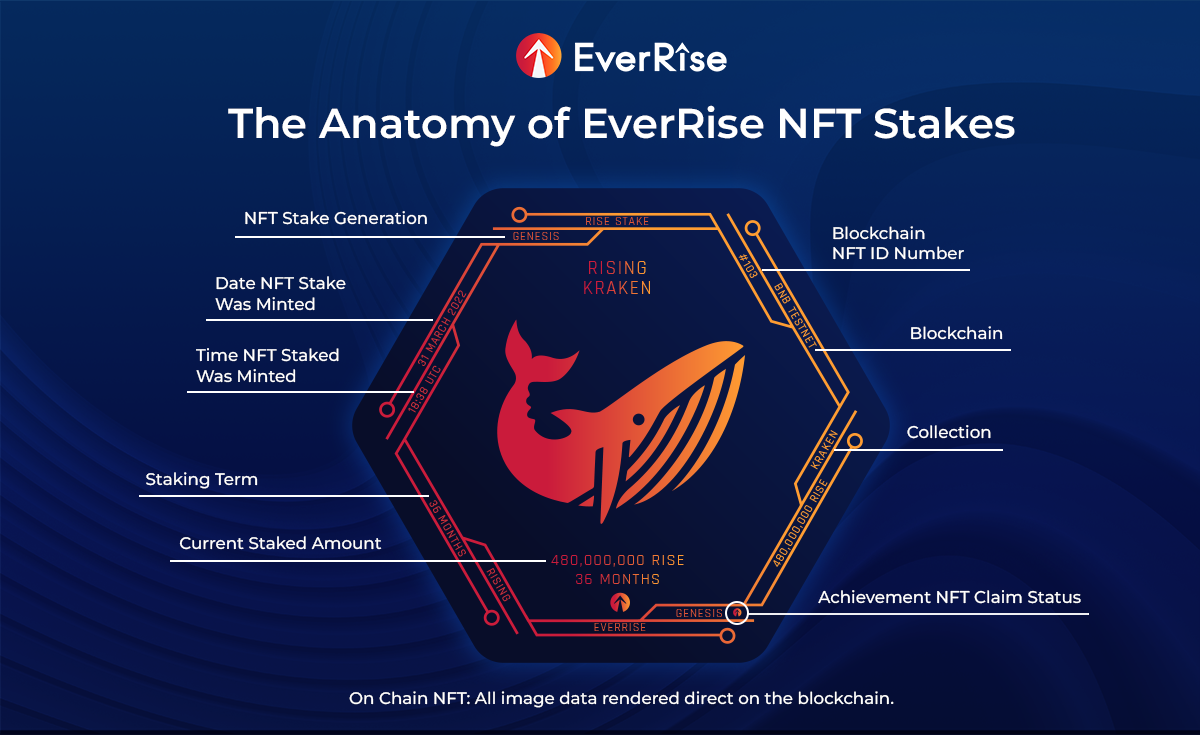
Jul 7, 2023
CrossX Released on dAppSocial
Move your stablecoins cross-chain for cheaper with CrossX! Earn immediate yield by providing liquidity.
Stay up to date on what's happening in the EverRise Ecosystem!
Keston Kuechel ~ June 10, 2022
One of the most popular new terms in cryptocurrency over the past few years has been tokenomics. Many projects in the space are launching with some sort of tokenomic model built into their protocol, but the questions many people have are: What are tokenomics and how do they benefit holders? In this blog, we’ll be answering just that.
Traditionally, “tokenomics” refers to the distribution of a cryptocurrency project’s underlying asset — a token or coin. The distribution of said assets is critical in maintaining a healthy circulating supply and a functioning protocol. A robust system of tokenomics ensures appropriate distribution between liquidity, holder, and deployer wallets.
The term “tokenomics” has outgrown its original definition and now describes the intrinsic functions of a cryptocurrency that deliver value to holders, promote project growth and sustainability, and incentivise purchasing and holding.
One of the most popular ways of driving a tokenomic model is with a tax on buys, sells, or transfers of a token. This is often a percentage of transactions, with the collected tax redirected back into the project and utilized in a way that benefits both the holders and the protocol itself. Sometimes, a project may use different tax rates for buys, sells, or transfers.
Projects with cogent and practical tokenomic models are more likely to succeed in the long run, as they create incentives for holders to remain engaged and foster an environment in which development, marketing, and operational funding is secured without the need of third parties. Understanding tokenomics and their applications in cryptocurrency is one of the most useful skills a crypto participant can learn!
The easiest way to check a project’s tokenomics is by reading the whitepaper supplied by the development team. A whitepaper is a document containing the purpose of the project as well as important information for potential holders such as tokenomic strategies, project statistics, and mathematics. This document can usually be found on a project’s website — and should be reviewed before making any purchases of an unfamiliar or new cryptocurrency.
To get a better understanding of tokenomics, it’s helpful to examine some of the most prominent and popular models on the market today. Here are 5 of the most frequently used models, and their functions.

Widely used amongst thousands of projects, reflections are one of the most popular models of tokenomics. Reflection-based projects levy a tax on buys, sells, transfers, or some variation thereof, and redirect those tokens to other holders of the project in real time.
Take for example a project with 10 holders who all hold equal amounts of a token. Assume there is a 10% tax on transactions. If a new holder buys 10,000 tokens from the project’s liquidity pool and a 10% tax is applied to that purchase, 1,000 tokens will be collected and redistributed to the other 10 holders of the project. Each prior holder receives 100 tokens in their wallet for simply holding the token.
These concepts scale with volume, and if a project with a 10% tax is experiencing $5,000,000 of volume a day, $500,000 of that is rewarded back to holders. Due to the simplicity and power of this method of tokenomics, it is widely used in many new projects.

Projects often implement a “burn”— a deflationary tokenomic model which collects a portion of taxed tokens and sends them to a defunct or non-accessible address. This permanently removes those tokens from circulation with the goal of increasing the relative price of each token. To better understand how burns theoretically increase a token’s price, it is important to understand circulating supply’s role in market capitalization. Modeled as the following equation, where ‘M' is market capitalization, 'S' is circulating supply, and 'P’ is price:

If circulating supply ‘S’ is burned over time, then the price ‘P’ of a token should rise accordingly to achieve constant market capitalization, ‘M’. Thus, early adopters of a burn-based project hope to be rewarded as the relative value of each one of their tokens increases gradually over time even if the market capitalization stays the same.
Burns should be viewed with caution. Although the idea is that a reduced supply increases demand and therefore price, there is nothing about a burn that increases the intrinsic value of a protocol. Without some source of external value (i.e., a reason for people to buy, or an independent source of revenue), burns can often be a mirage founded upon an elementary economic concept of scarcity and its relation to price. Projects which promote a burn function as their most important utility should be viewed with skepticism.

Many new projects assess a “marketing” or “operational” tax in order to stay afloat and pay development costs that are critical to the growth of the project and its long term success. Take a hypothetical example where a project utilizes reflections, burns, and operational funding:
The tax structure for this project is as follows with a 10% overall tax: 5% reflections, 3% burns, and 2% operations. 5% of every transaction is reflected back to any holders of the project, 3% is sent to a dead address and taken out of circulation, and 2% is sent to an operations or marketing wallet to be used as needed by the team to further development of the project.
While not all projects utilize tokenomics to fund themselves, it is a widely used and viable strategy to sustain operations in the early stages of a cryptocurrency project. Operational taxes such as this do not directly benefit holders, but they do indirectly benefit them over time due to the project’s ability to continue to operate, market, and innovate as needed.

Staking is the act of voluntarily locking up cryptocurrency holdings in order to receive rewards or interest on your principal amount, and is used as a way of creating passive income streams by many crypto holders. There are many different forms of staking in use by a multitude of protocols — from the largest to the smallest offerings on the market.
Some top crypto projects implement a "proof of stake" model where holders participate in a pool to validate transactions. Another popular staking method is yield farming, where holders provide liquidity pairs with a coin and another asset. Tokenomic staking, however, is usually just a promise not to sell or transfer tokens in exchange for rewards. The concept is almost the same as reflections, but users must opt in to their rewards by entering a lockup period. Projects offering tokenomic staking benefit from knowing that a certain amount of tokens are off the market, which promotes stability. This tokenomic model seeks to benefit long term adopters, and stabilize a project against market volatility.
Staking is a great way to earn passive income and is a win-win for both projects and investors. Now, there are newer and modified versions of staking available from protocols such as EverRise.
EverRise’s staking platform allows users to lock their tokens inside their wallet, without the need to lend to an outside pool. This is achieved through a proprietary system called NFT staking, in which an ‘NFT’ or ‘non-fungible token’ is minted at the time creating a staking contract, and held in the participants wallet. This NFT locks the tokens inside the wallet for a set amount of chosen time, between 1 and 36 months. Stakers in this system are rewarded by a buyback (see below) based on overall volume, not at a set rate. This means that during times of increased volume, staking participants receive increased rewards. Additionally this protects the project as stakers are encouraged to hold their stakes through market volatility, lessening the impact of outside market forces on EverRise and its holders.

Reserve liquidity and share buybacks have been used in the traditional stock market for many years as a way to increase the relative value of each share in a company and satisfy investors. Companies use their cash reserves to purchase their shares off the open market and supplement shareholder value, provided the company does not need the money for its own operational expenses.
Until recently, a project with a buyback protocol in cryptocurrency did not exist. The CEO of EverRise saw this opportunity, and created an ingenious solution to this problem — EverRise. EverRise is the original buyback protocol in cryptocurrency, and the project’s buyback contract has been forked (copied) over 3,000 separate times. The system works as follows:
Each time EverRise is bought, sold, or transferred, there is a tax levied on that transaction.The tax is then sent directly to the EverRise buyback protocol and set aside. After a certain amount of activity on an individual blockchain, the buyback protocol is activated and native coins are used to buy RISE on the open market and then immediately distribute it to staking participants. The principal function of the buyback is to promote native coin liquidity, ensuring the health of the EverRise ecosystem on as many blockchains as possible. A significant secondary benefit is providing meaningful rewards to those who show their commitment to the project by staking their holdings for extended terms. By promoting its own cross-chain liquidity and rewarding long term adopters, EverRise continues to build with the future in mind.
There are many other forms of tokenomics in use today, with these examples being some of the most commonly used and attractive to potential holders. With so many possibilities on the market, it is important to find projects that have a game plan for not only rewarding loyal holders but also for maintaining the project’s overall health and growth. The information in this blog provides a starting point for evaluating the potential of a crypto’s tokenomic models, and by investing into projects that are transparent and open — any market participant stands a much better chance at finding success in the world of decentralized finance and cryptocurrency.

Jul 7, 2023
Move your stablecoins cross-chain for cheaper with CrossX! Earn immediate yield by providing liquidity.

Jan 31, 2023
Starting today, each RiserBotz minted is entered to win one of five free RiserBotz daily.

Jan 17, 2023
These bots are here for good! RiserBotz is a collection of 10,000 PFPs on the Ethereum blockchain. They are the first ERC-721 token that holders can lock in their wallet. EverRise, Inc. ....